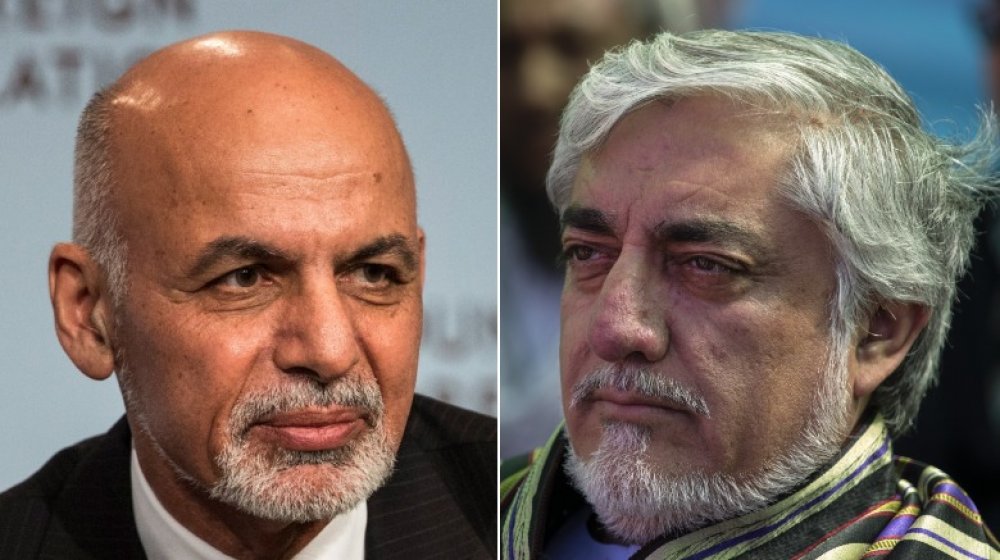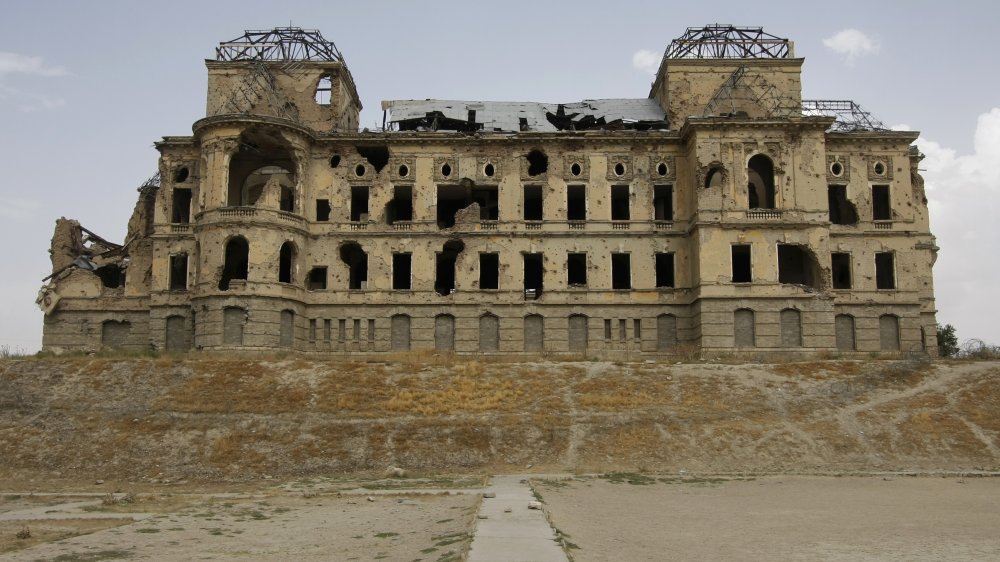The Curious Case Of Afghanistan's Two 'Presidents'
In March 2020, Afghanistan learned firsthand that the saying "two heads are better than one" doesn't apply to heads of state. In a story bordering on the surreal, the country's incumbent president, Ashraf Ghani (left), and his primary rival, Abdullah Abdullah, held dueling swearing-in ceremonies that were serenaded by explosions, per the BBC. This came on the heels of a contentious election fraught by fraud allegations, nullified votes, and abysmally low voter turnout. The BBC writes that only 1.8 million of Afghanistan's 9.6 million registered voters showed up at the polls, and nearly a million of those votes were thrown out due to alleged irregularities.
Ghani garnered 50.64 percent of the eligible votes, compared to Abdullah's 39.52 percent, but with roughly 50 percent of the ballots cast aside by officials, that's hardly a clear indication of the will of the voters. If anything, Afghan citizens weren't thrilled about either candidate. Ghani and Abdullah previously competed for the presidency in 2014, and both men were dogged by accusations of corruption. Further depressing turnout, the Taliban threatened to attack polling stations.
Dismissing the obviously compromised election results as illegitimate, Abdullah declared himself Afghanistan's rightful president despite having no obviously legitimate claim. U.S. special envoy Zalmay Khalilzad has attempted to broker an arrangement that may create two competing administrations, which on its face sounds farcical. But in a way, the situation is a logical summation of an illogical situation the U.S. helped create.
How the U.S. helped create Afghanistan's two-headed monster
The BBC observes that the political battle between Ashraf Ghani and Abdullah Abdulla has been fought against the backdrop of peace talks between the Afghan government and the Taliban. The United States stipulated those negotiations as part of its own peace agreement with the Taliban, which was signed in February 2020, the same month the election took place. Of course, this entire quagmire started with the U.S. deciding to depose the Taliban.
As the University of Virginia Miller Center recounts, in the immediate aftermath the 9/11 terrorist attacks, President George W. Bush launched "Operation Enduring Freedom," which not only targeted Al Qaeda for orchestrating the attacks but also attacked Afghanistan's Taliban government for "[providing] sanctuary to Al Qaeda." In October of that year, the United States established "a fledgling democracy" that would struggle to fly.
The U.S. campaign to beat back the Taliban raged for roughly 20 years, and as the Washington Post describes in a damning investigation, the government lied about the war's disastrous results while waging a doomed nation-building effort. Former Army lieutenant Douglas Lute lamented, "We were devoid of a fundamental understanding of Afghanistan — we didn't know what we were doing." According to the Guardian, an interviewee told the Washington Post that the U.S nurtured a culture of corruption and "warlordism" that ended up strengthening the Taliban. Afghanistan's woes are too complex and require too much expertise to comprehensively flesh out here, but it seems hard to deny that the U.S. helped lay the unstable foundation that turned Afghanistan's presidency into a two-headed monster.

